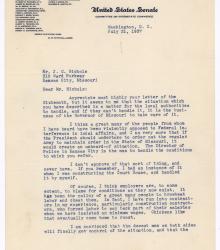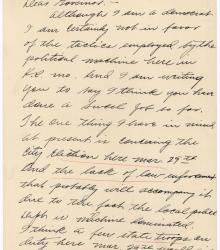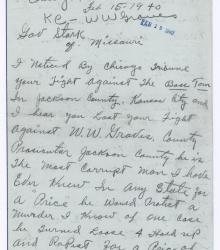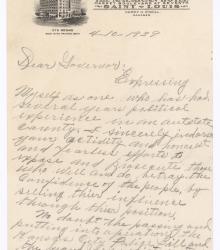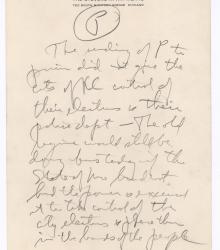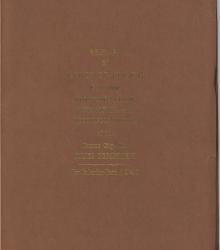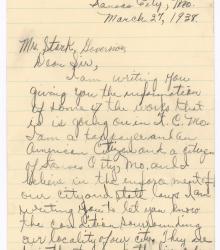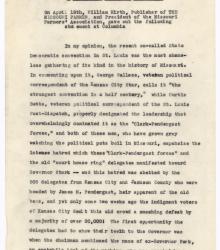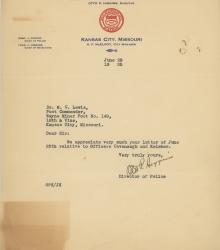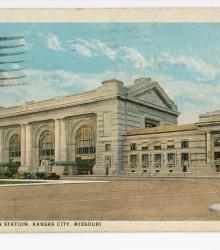Telegram from Kansas City Director of Police Otto P. Higgins to Governor Lloyd C. Stark. Higgins insists that the idea that voters will not receive adequate protection on election day is misguided. He writes "there is no reason for anxiety."
Kansas City Police Department
Letter from Harry S. Truman to J. C. Nichols. Truman states that it would not be prudent for the federal government to interfere with Kansas City labor issues. Instead, he suggests contacting the Director of Police in Kansas City.
Letter signed "A booster" to Governor Lloyd C. Stark, concerned about the lack of law enforcement anticipated at the March 29 election and requesting the presence of National Guard troops to aid in election security and safety.
Letter from L. E. Myers to Governor Lloyd C. Stark, stating that Jackson County prosecutor W. W. Graves is corrupt, and accusing him letting rapists and thieves go free in a case for a bribe.
An anonymous letter praising Stark for his efforts to dismantle the Pendergast machine.
Anonymous letter implicating the Kansas City Police Department in voting irregularities and that state control of the department is what enabled fairer elections.
Reporting at the end of the Kansas City Police Department's first year of operation under the state administration.
Letter signed "A friend" to Governor Lloyd C. Stark, concerned about local crime, and describes two men named Jim Monzo and Joe Deluco as "in the racket here of narcotics and want me to get in the racket with them."
Press release containing the test of a statement given by William Hirth, publisher of the Missouri Farmer and president of the Missouri Farmers' Association, regarding the state Democratic convention. Hirth reports that the recent "convention in St.
Letter from Kansas City, Missouri Department of Police Director Otto P. Higgins to Wayne Miner Post No. 149 Post Commander Dr. Milton C. Lewis. Higgins writes that he appreciates Lewis's letter concerning police officers Cavanaugh and Keleher.
On June 17, 1933, four law enforcement officers and their prisoner, Frank Nash, were fatally wounded in a botched rescue attempt outside Union Station. The story of the Union Station Massacre, as it became known, centered on Frank Nash, who had been convicted of three separate crimes of a serious nature: murder, armed burglary, and then assault.

